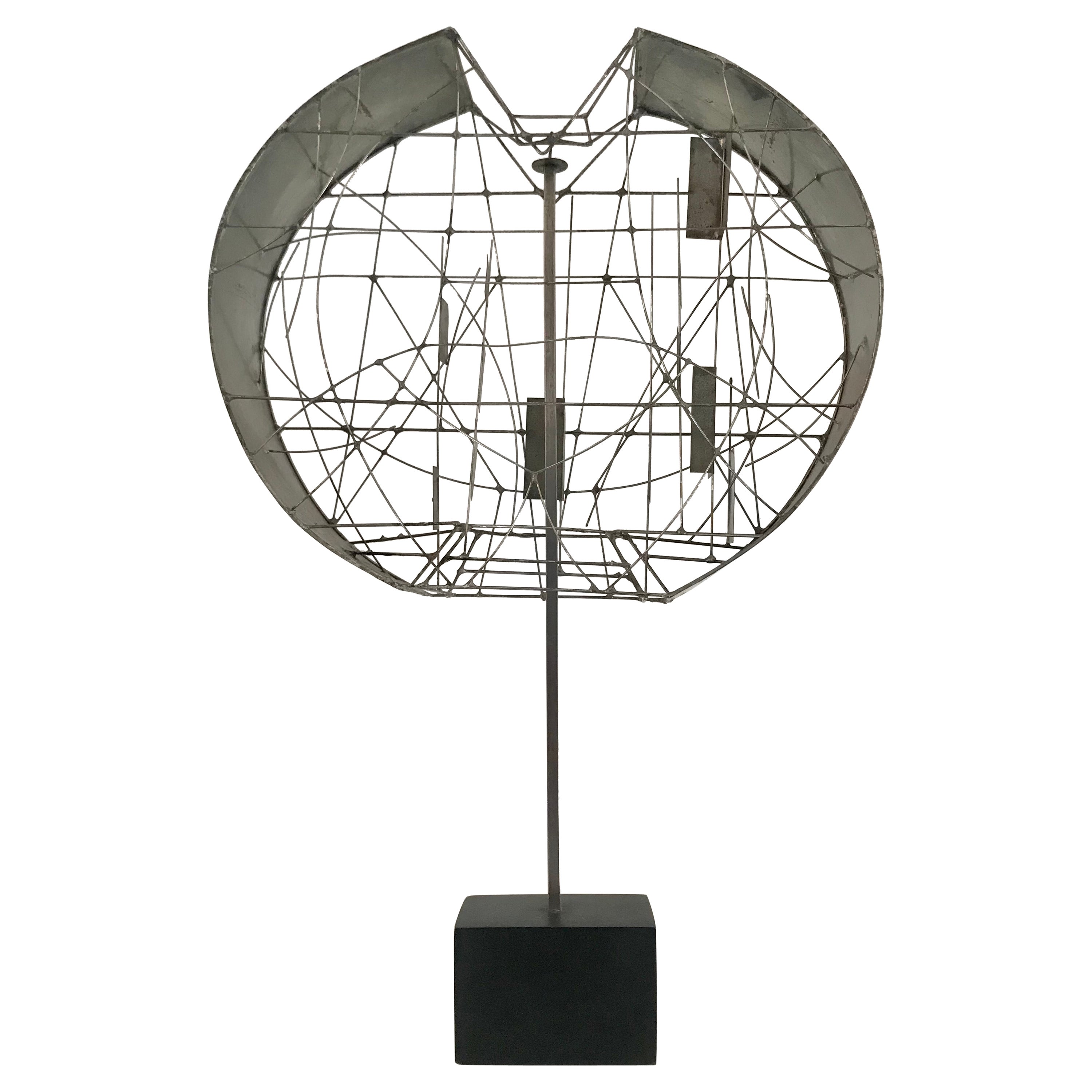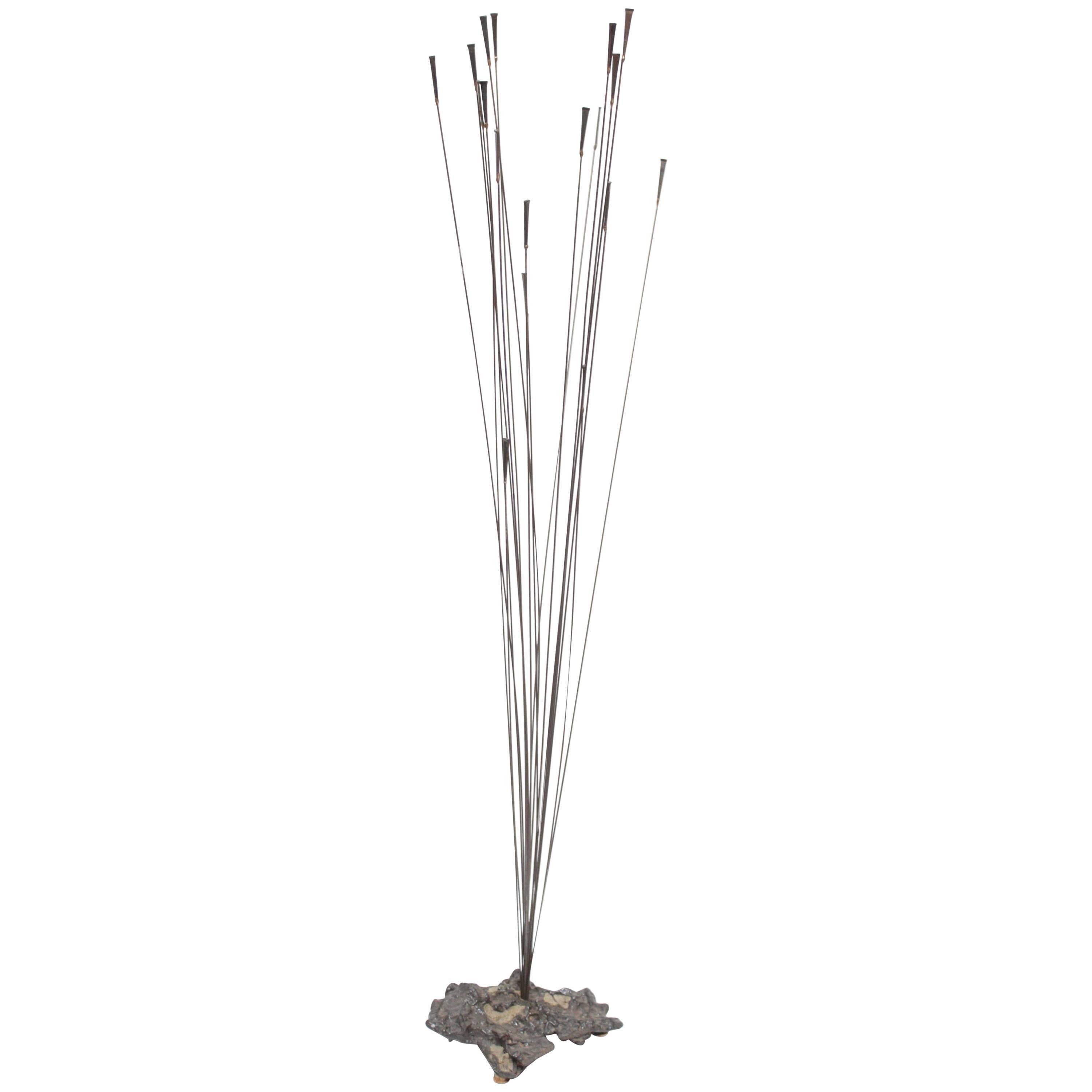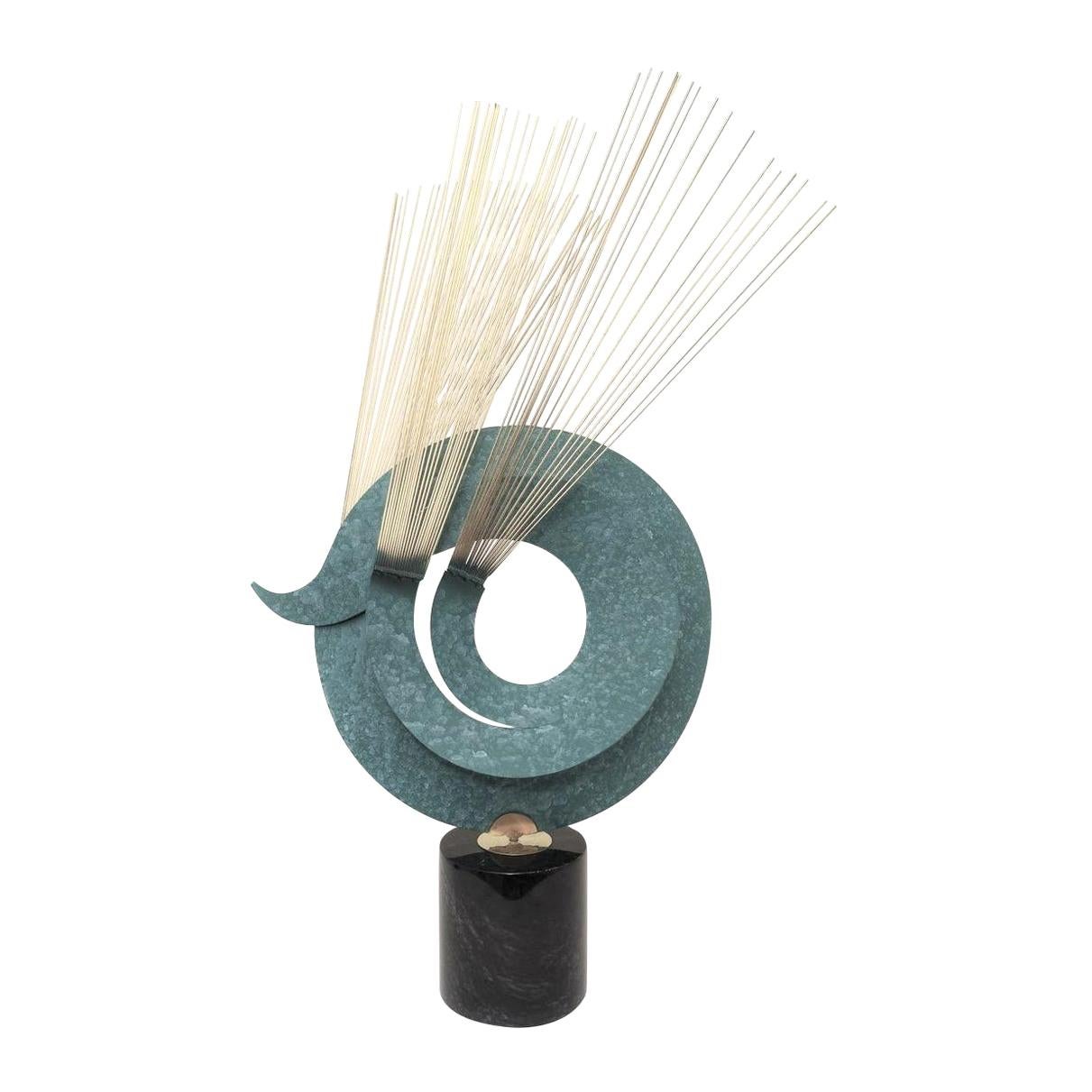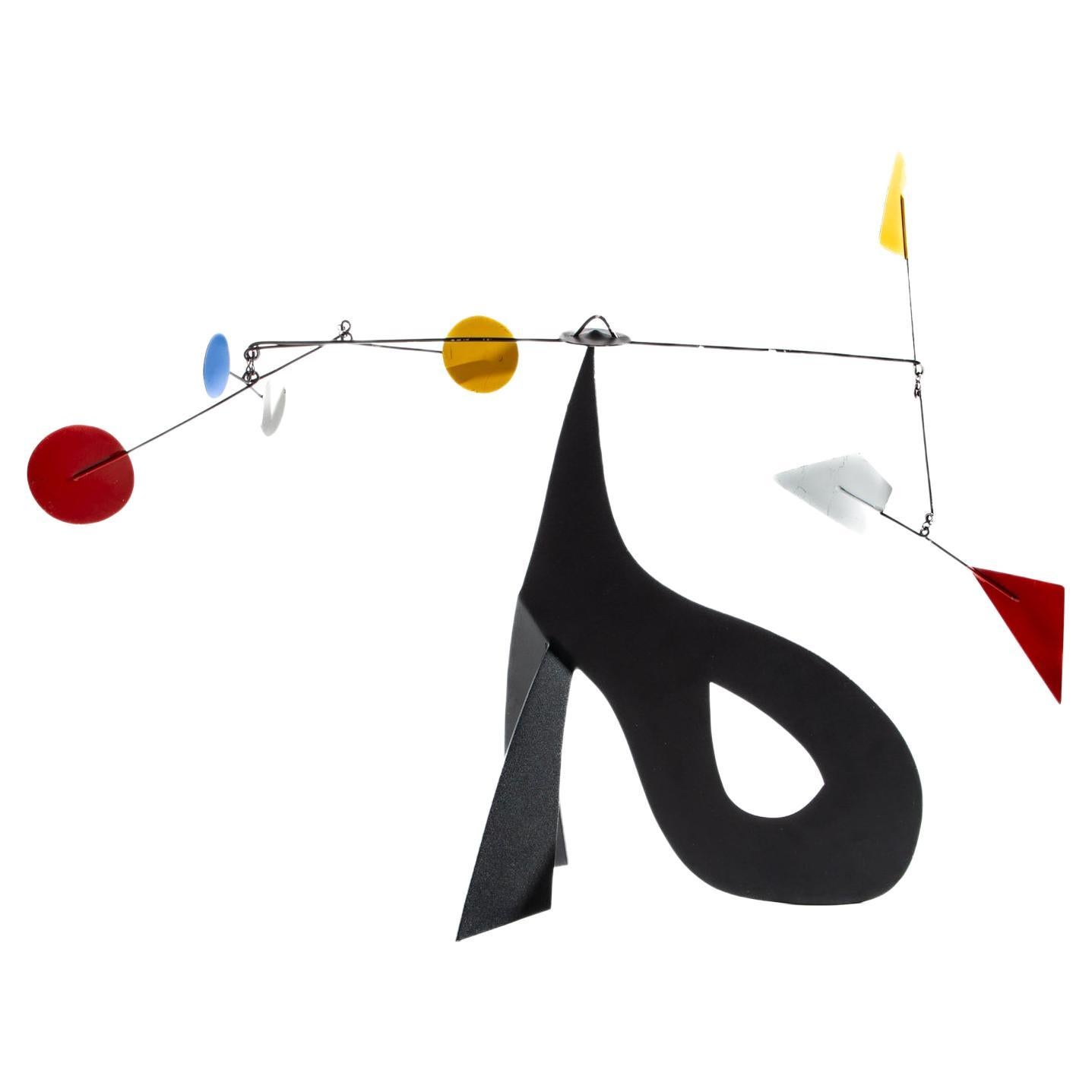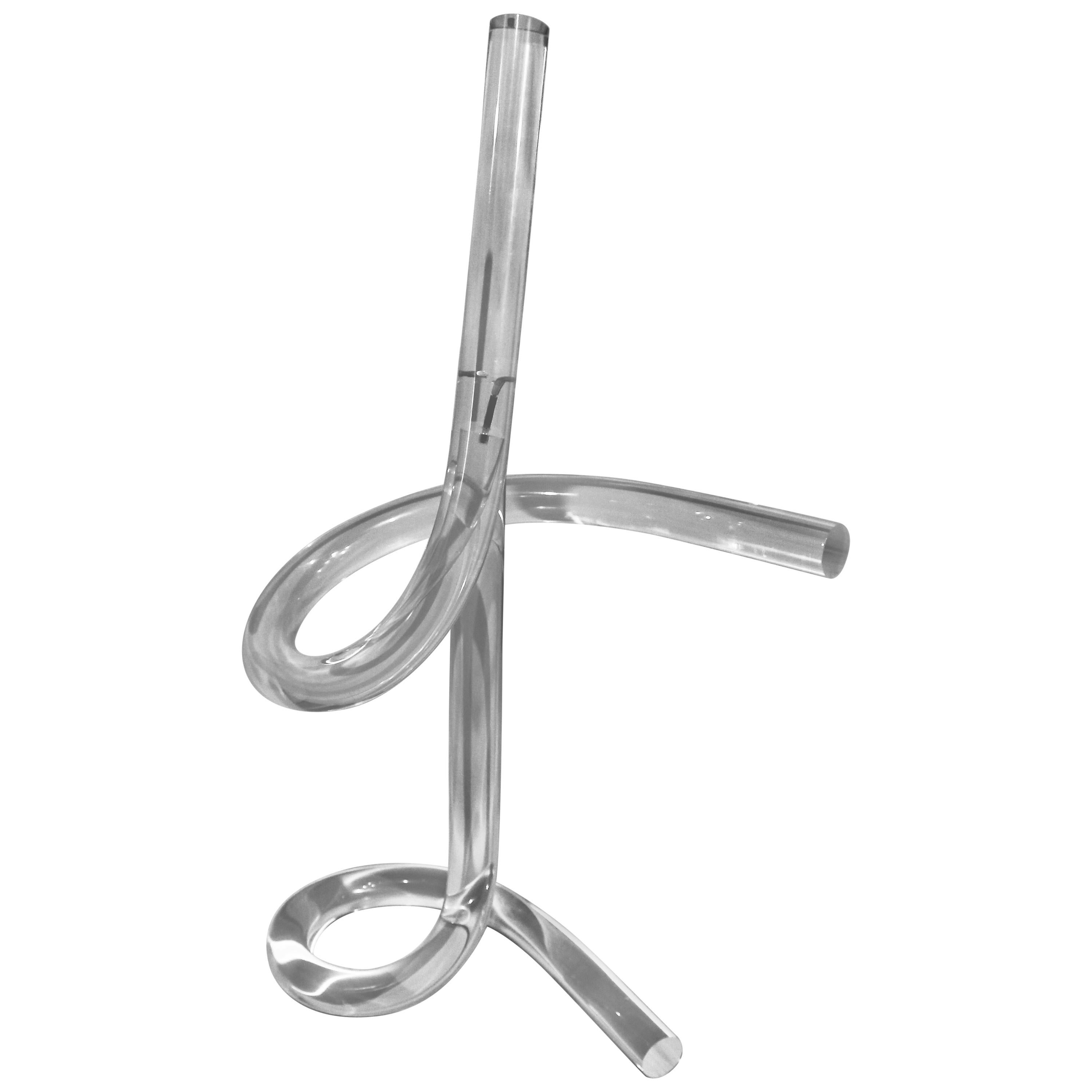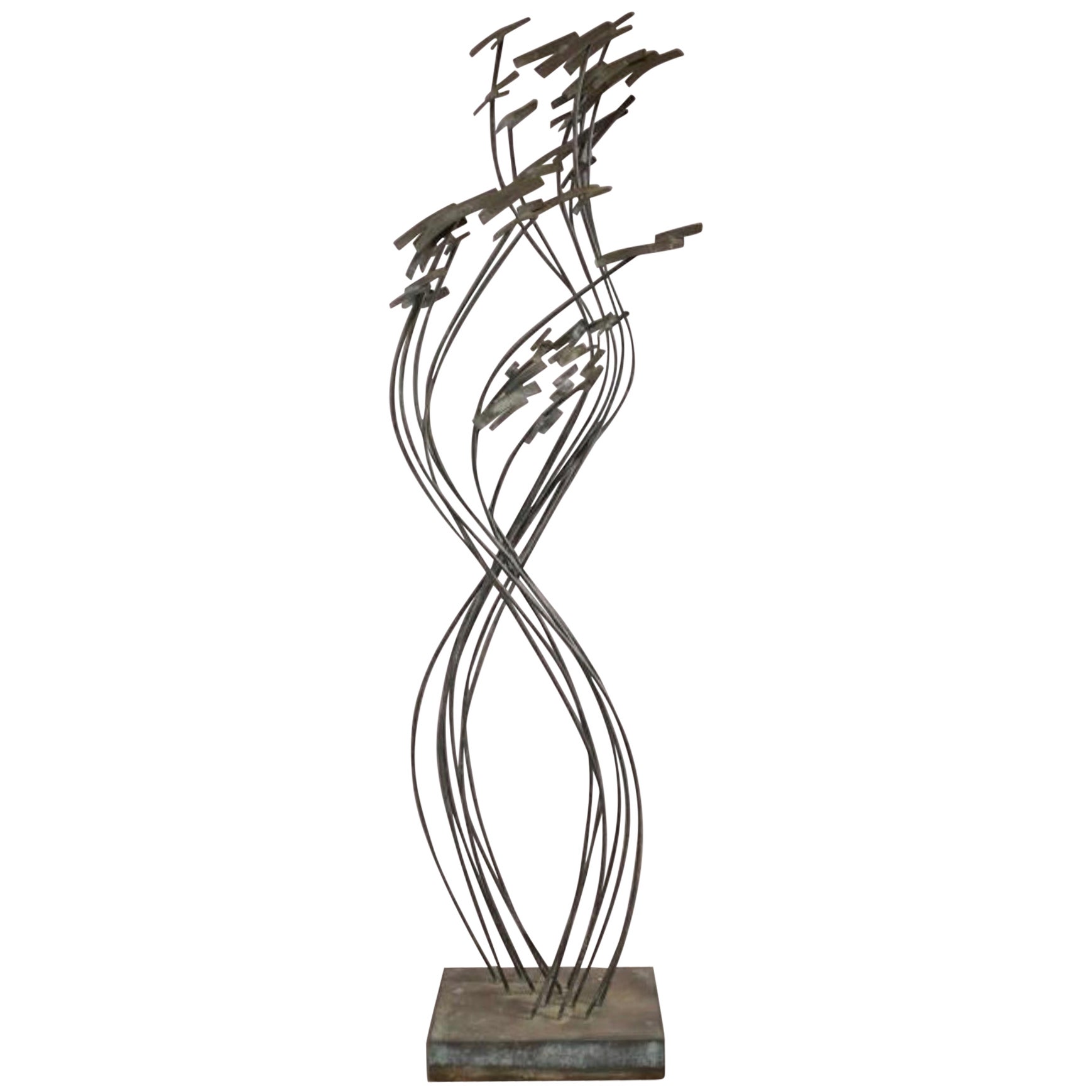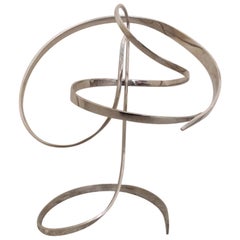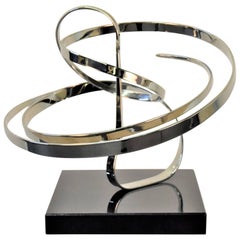
Michael Cutler Kinetic Sculpture
View Similar Items
Want more images or videos?
Request additional images or videos from the seller
1 of 9
Michael Cutler Kinetic Sculpture
About the Item
- Creator:Michael Cutler (Artist)
- Dimensions:Height: 14.25 in (36.2 cm)Width: 15.5 in (39.37 cm)Depth: 15 in (38.1 cm)
- Style:Mid-Century Modern (Of the Period)
- Place of Origin:
- Period:
- Date of Manufacture:1982
- Condition:Wear consistent with age and use.
- Seller Location:Middlesex, NJ
- Reference Number:1stDibs: LU108046171093
About the Seller
4.8
Vetted Seller
These experienced sellers undergo a comprehensive evaluation by our team of in-house experts.
Established in 2011
1stDibs seller since 2014
249 sales on 1stDibs
More From This SellerView All
- Alessandro Pianon ' Pulcini ' Murano Bird SculptureBy Vistosi, Alessandro PianonLocated in Middlesex, NJAlessandro Pianon ' Pulcini ' Murano Bird SculptureCategory
20th Century Italian Mid-Century Modern Animal Sculptures
MaterialsMurano Glass
- Large Signed Silas Seandel Wall SculptureBy Silas SeandelLocated in Middlesex, NJLarge Signed Silas Seandel wall sculpture.Category
Mid-20th Century American Mid-Century Modern Abstract Sculptures
MaterialsMetal
- Large Italian 1970s Brass 'Praying Mantis' Floor SculptureLocated in Middlesex, NJLarge Italian 1970s Brass 'Praying Mantis' Floor Sculpture.Category
20th Century Italian Mid-Century Modern Animal Sculptures
MaterialsBrass
- Leo Lionni Original No. 1 of 6 Sculpture the "Giraluna" from Parallel BotanyBy Leo LionniLocated in Middlesex, NJThe giraluna is a spectral plant entity from Leo Lionni's Classic alternate universe textbook Parallel Botany. About the Sculpture: The Giraluna This elusive and capricious plant is the Dream Queen of parallel botany. Hydendorp, quite rightly, does not hesitate to define it as the "most parallel of plants, most plantlike of the parallels," and in so doing he stresses not so much its physiognomic oddnesses as the disconcerting normality of its shape. "If we were in the jungle," he writes, "and we found one blocking our way, we would not for an instant hesitate to hack it down with our machetes."1 But it will not be our good fortune to encounter it. If in reconstructions the Giraluna displays considerable plantness of form and an exact and convincing solidity, in its natural environment it can be perceived only as a nebulous interplay of glimmerings and empty spaces which alternate in the darkness and vaguely suggest where its outlines might be. (pl. XXIV) Its nocturnal presence, in fact, is manifested almost entirely in terms of the equivocal O'-factor of the moonbeams, which was discovered and measured a few years ago by Dennis Dobkin of the Point Paradise Observatory. This factor changes the light-shade ratio which normally defines volumes into a subtle interplay of lucencies and opacities, so that our perceptions, our basic sensorial habits conditioned by thousands of years of daytime life in the "solar key," would need complete readjustment and indeed reversal in order to come to terms with it. Daylight isolates objects, bestowing a noisy Meaning on all the odds and ends in the world. But night takes everything away except the very soul of things: a black light, a transparent darkness, a secret we cannot grasp. During the long night of the Erocene era man caught a glimpse of the Giraluna rising mysteriously in its barren landscape. Presolar man imagined himself the child of the Moon. In her lap he had known the comfort of the life, silent torpor of the night, and by her light he had seen silver pearls lie weightlessly upon the coronas of the first great flowers. But he left us only a few enigmatic signs of all this: the Feisenburg cave, the petrified bones in the Ahmenstadt tumulus, the Boergen Cup. Paradoxically enough, all that we do in fact know of his presence in that landscape comes to us from our study of his nocturnal vegetation, Around the middle of the Erocene era, when the flowers of night were fading away in the light of a new dawn, man saw that outlines and colors were slowly hardening. Thus he discovered the stone-hard world of day, and learned to be the child of both Sun and Moon, of Amnes and Ra, of Disarm and Karak, of Nemsa and Taor. The "crawling stones" of Yorkshire, the stele of Tapur, the graffiti of Klagenstadt, these have preserved for us the nearly obliterated images of the two divinities who from the center of their temples drew the design of the universe. But the Sun was not long in attaining absolute power over everything in the world. "O Ra, o Amno Ra our benefactor, glowing and flaming! Gods and men bow down before you, for you are their creator and their only Lord." Such was the prayer of Amresh, High Priest of Egypt. And a new vegetation, outspoken and exuberant, appeared on the earth, and made the bright leaves dance in the morning breeze. Night soon became no more than a dark corridor joining one day to another, a place of visions and memories, a storehouse of words and images. It became a secret refuge where the vanished flowers could once more flaunt their coronas to the Moon. And thousands of years later the black flowers of that distant night-Giraluna, Lunaspora, Solea argentea-were born from seeds hidden deep in a soil rich with legends and stories. If our knowledge of the Giraluna is today reasonably complete and detailed this is due to the industry and scholarship of Professor Johannes Hydendorp of the University of Honingen, who has collected and collated all known facts and kept his records abreast of the latest developments. Our historical and geographical information comes from the most varied sources: legends and folk tales handed down from generation to generation, accounts given by explorers, anthropologists, and paleontologists, and of course the more recent testimony of botanists such as Heinz Hornemann and Pierre Maessens. Source: Sivatherium. narod .edu About Sculpture: Leo Lionni is best known today for his children's books: Little Blue and Little Yellow; Frederick—the one about the mouse who gathers poems while his family is harvesting seeds for the winter—Swimmy the Fish. Of course the children don't remember his name, but to parents and grandparents, the ones who actually do the reading, he is something of a celebrity. Most people don't realize that Lionni is also one of the 20th-century's most influential graphic designers. Within that field, he is a legend. In fact, he didn't start doing children's books until he had left the world of advertising, teaching, and design to allow more time for contemplation and for art. Little Blue and Little Yellow (1959) began as an improvised entertainment for bored grandchildren. What can you do with a few scraps of colored paper and a lot of imagination ? Make the first best-selling children's book illustrated with abstract art. Before that his work as design director for Olivetti Corporation of America and the art director of Fortune magazine, the co-founder of the Aspen...Category
20th Century American Mid-Century Modern Abstract Sculptures
MaterialsSteel, Bronze
- Signed William Friedle Brutalist Wall SculptureBy William FriedleLocated in Middlesex, NJSigned William Friedle Brutalist wall sculpture.Category
Mid-20th Century American Mid-Century Modern Wall-mounted Sculptures
MaterialsMetal
- Large Mixed Metal Wall Sculpture by Silas SeandelBy Silas SeandelLocated in Middlesex, NJLarge mixed metal wall sculpture by Silas Seandel. Piece is signed and dated 1971.Category
20th Century American Mid-Century Modern Wall-mounted Sculptures
You May Also Like
- Michael Cutler Kinetic SculptureBy Michael CutlerLocated in West Palm Beach, FLMichael Cutler was an American Artist from California. Trained as an electronic technician, he turned to kinetic sculpture in the 1970s. The sculpture 3 precision balanced elements...Category
1990s American Abstract Sculptures
MaterialsChrome
- Michael Cutler Hanging Kinetic Aluminium SculptureBy Michael CutlerLocated in Ferndale, MIMichael Cutler designed steel rod circle holding rotating three-piece mobile sculpture . Excellent condition.Category
Late 20th Century American Mid-Century Modern Mobiles and Kinetic Sculpt...
MaterialsAluminum
$2,300 Sale Price34% Off - "Symbiosis" a Kinetic Sculpture by Michael SecterBy Michael SecterLocated in Dallas, TXBorn in Winnipeg Canada, Michael Sectors work and craftmanship has been praised as remarkable. He brings contemporary techology to serve his art directing the fabrication of his work...Category
Vintage 1970s Canadian Mid-Century Modern Sculptures
MaterialsSteel
$3,200 Sale Price23% Off - Kinetic Mobile SculptureLocated in Los Angeles, CANice piece of modern art. Studio made. One off. It rotates around the stem and moves side to side. Illegibly signed with the year 1969. Great as a decorative art object on a ...Category
Mid-20th Century American Mid-Century Modern Mobiles and Kinetic Sculptures
MaterialsSteel
$1,500 - William Bowie Kinetic SculptureBy William BowieLocated in Brooklyn, NY1960s Bowie Brutalist work composed of patinated steel rods and braze welded masonry nails with gilt decoration which fan out to create a free-form / moving sculpture...Category
Vintage 1960s American Mid-Century Modern Mobiles and Kinetic Sculptures
MaterialsStone, Steel
- Curtis Jere Kinetic SculptureBy Curtis JeréLocated in West Palm Beach, FLKinetic sculpture in Verdi Gris coloration, marble and brass by Curtis Jere Artisan House, 1996 Overall size is 23 wide by 15 deep and 37" high. Base measures 6" diameter.Category
1990s North American Mid-Century Modern Mobiles and Kinetic Sculptures
MaterialsMarble, Brass



